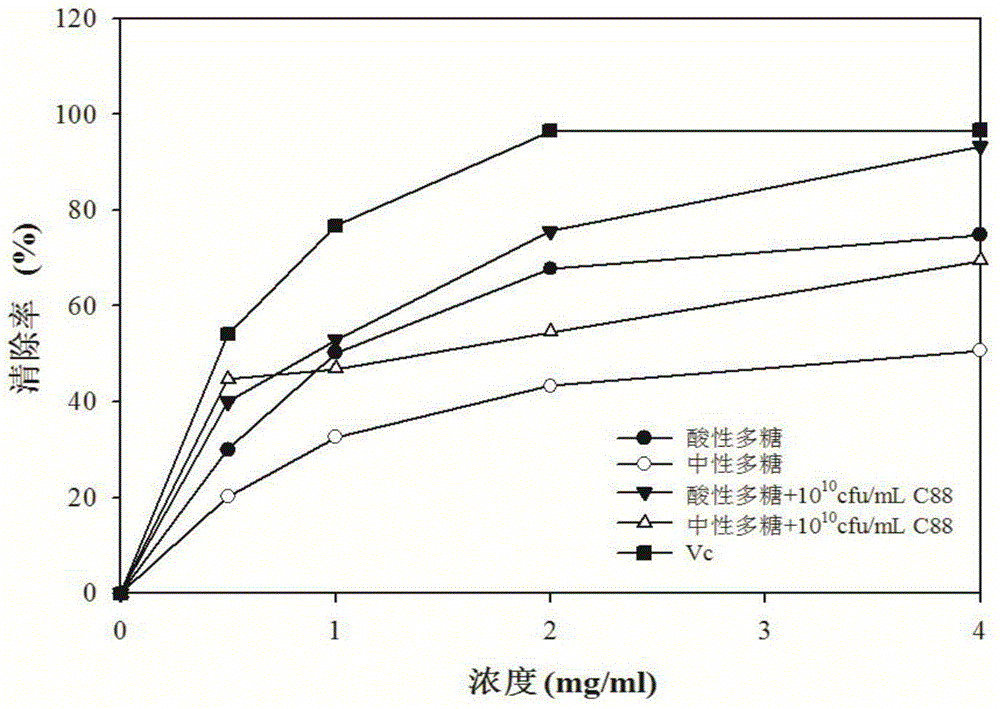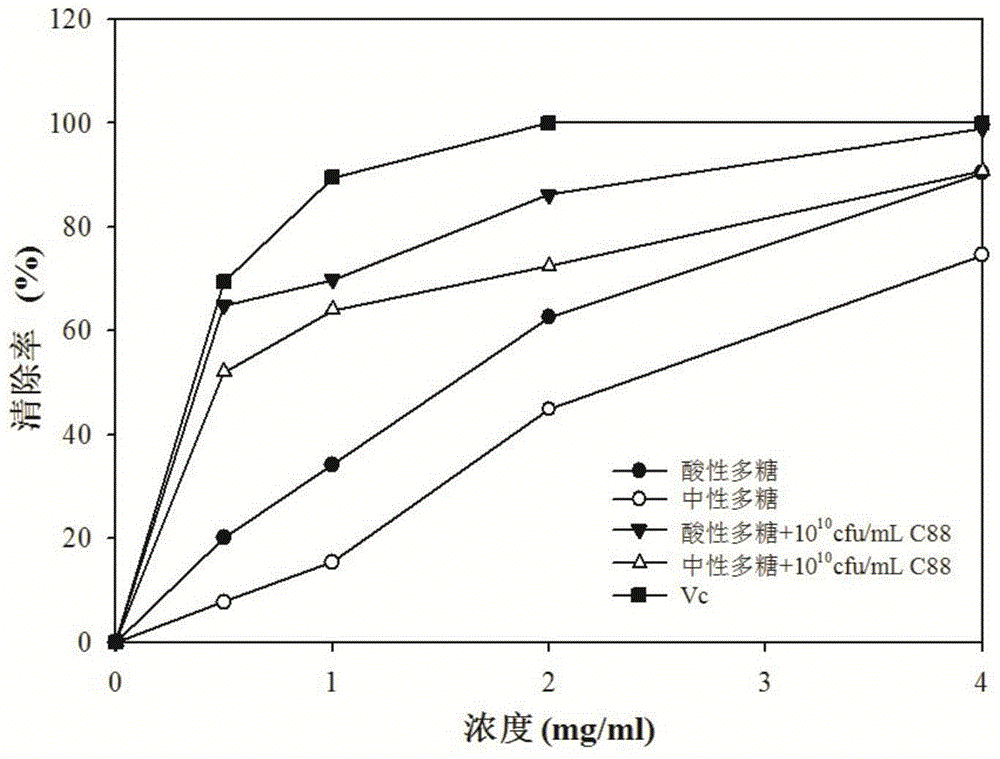Lactobacillus-ginseng polysaccharide composition and its preparation method and use
A technology of ginseng polysaccharide and composition, applied in the field of lactic acid bacteria and ginseng polysaccharide composition, can solve problems such as liver damage and cancer, and achieve the effects of reducing MDA content and enhancing antioxidant enzyme activity
- Summary
- Abstract
- Description
- Claims
- Application Information
AI Technical Summary
Problems solved by technology
Method used
Image
Examples
preparation example Construction
[0031] The preparation process of the ginseng neutral polysaccharide is as follows: Weigh 200 g of dried ginseng root powder (20 mesh), decoct in 2000 ml hot water twice, each time for 2 hours, filter the boiled solution with gauze (six layers), combine the filtrate and concentrate to 800ml, centrifuge to discard the precipitate, add 3 times the amount of absolute ethanol to the supernatant for ethanol precipitation, let it stand overnight at 4°C, centrifuge to discard the supernatant, and freeze-dry the precipitate to obtain ginseng total polysaccharides, which are treated with DEAE-cellulose ion Separation and purification by exchange chromatography column, eluting with distilled water and 0.5M NaCl solution successively, detecting polysaccharide content with sulfuric acid-phenol, combining water eluent to obtain neutral polysaccharide of ginseng;
[0032] Ginseng neutral polysaccharides were dialyzed with 0.5M NaCl solution eluent (molecular weight cut-off 3500Da) and freeze...
Embodiment 1
[0042] Mix 9 parts of ginseng acidic polysaccharide powder, 28 parts of skimmed milk powder, 18 parts of sucrose and 30 parts of dextrin, add absolute ethanol, and fully stir to form a soft material. pressure will disperse;
[0043] Granulate the prepared soft material, pass through a 20-mesh sieve to obtain wet granules, put the wet granules in an oven at 55°C, and dry them by blasting for (2-2.5) hours to reduce the moisture content to below 3%. Sieve through a 16-mesh sieve;
[0044] Then add 1.6 parts of mannitol, 0.8 parts of magnesium stearate, 0.8 parts of citric acid and 4 parts of Lactobacillus plantarum C88 starter into the dry granules, fully and evenly, to obtain the composition of lactic acid bacteria and ginseng polysaccharide.
Embodiment 2
[0046] Mix 11 parts of ginseng neutral polysaccharide powder, 32 parts of skimmed milk powder, 22 parts of sucrose and 32 parts of dextrin, add absolute ethanol, and fully stir to form a soft material. loosen with light pressure;
[0047] Granulate the prepared soft material, pass through a 20-mesh sieve to obtain wet granules, put the wet granules in an oven at 55°C, and dry them by blasting for (2-2.5) hours to reduce the moisture content to below 3%. Sieve through a 16-mesh sieve;
[0048] Then add 2.4 parts of mannitol, 1.2 parts of magnesium stearate, 1.2 parts of citric acid and 6 parts of Lactobacillus plantarum C88 starter into the dried granules, fully and evenly, to obtain the composition of lactic acid bacteria and ginseng polysaccharide.
PUM
| Property | Measurement | Unit |
|---|---|---|
| absorbance | aaaaa | aaaaa |
Abstract
Description
Claims
Application Information
 Login to View More
Login to View More - R&D
- Intellectual Property
- Life Sciences
- Materials
- Tech Scout
- Unparalleled Data Quality
- Higher Quality Content
- 60% Fewer Hallucinations
Browse by: Latest US Patents, China's latest patents, Technical Efficacy Thesaurus, Application Domain, Technology Topic, Popular Technical Reports.
© 2025 PatSnap. All rights reserved.Legal|Privacy policy|Modern Slavery Act Transparency Statement|Sitemap|About US| Contact US: help@patsnap.com



